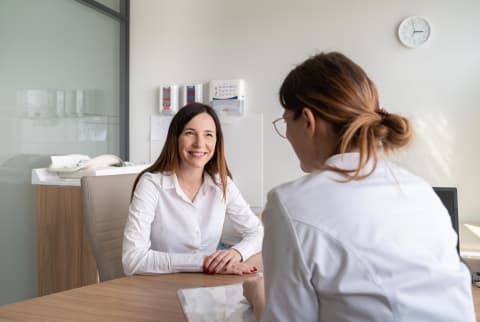Advertisement
Why You May Get An Anxiety Screening At Your Next Doctor's Visit


The typical annual physical consists of vital signs, height and weight measurements, a quick ear check, and maybe a standard vision test. However, recommendation could add another step to your next GP visit—and it's one that could change the mental health landscape in the U.S.
Anxiety screenings are now recommended for most adults
Over 30 percent percent of U.S. adults experience any anxiety disorder at some time in their lives. A recommendation from the The US Preventive Services Task Force (USPSTF) aims to detect anxiety before it gets out of control, right from the doctor's office.
According to a release on JAMA Network1, the USPSTF recommends screening for anxiety disorders in adults between 19 and 65 years old (including pregnant and postpartum persons) in primary care settings.
The USPSTF is a collection of 16 highly respected medical professionals, and they've come to the conclusion that these screenings have more potential benefits than harms. Does this mean your physician has to conduct them? No, but they'll certainly become more common, as the biennial breast cancer checks for women 40+, which also initially came at the recommendation of the USPSTF, have.
It's also important to note the Affordable Care Act requires insurers to cover these services with no cost-sharing (i.e., no deductible and no co-pay).
What's the point of this recommendation?
The USPSTF’s decision was motivated by the increasing prevalence of anxiety disorders and the difficulty identifying symptoms in a primary care setting, thus delaying treatment, as noted in the release.
What's more, many people with anxiety present with symptoms such as insomnia, increased sweating, and muscle tension, which can be confused for purely physical concerns, board-certified psychiatrist Sue Varma, M.D., P.C., DFAPA tells mindbodygreen. With this new screening, physicians may be able to connect the dots for those experiencing anxiety sooner.
Because this is a recommendation and not a requirement, it may not happen right away at every doctor's office. However, the USPSTF has created the anxiety screening and made it accessible for physicians—meaning the heavy lifting is done, so physicians may be more inclined to implement the changes sooner. What's more, the task force partners with countless entities to spread the word, including the American Academy of Family Physicians.
But why cut off these screenings at 65? "Many individuals in this age category may present with physical symptoms of anxiety—i.e. aches pains and headaches or insomnia, and it may in fact be legitimate health problems, not anxiety—leading to a lot of false positives," Varma says.
"At the same time, there is a high degree of anxiety for a variety of reasons—loss of mobility, good health, divorce, empty nesters, losing friends to illness and death with advancing age," she adds, so it's still important for physicians to keep an eye out for symptoms of anxiety regardless of whether official screenings become the norm.
What to expect from an anxiety screening
This screening is designed to address many different forms of anxiety—from generalized anxiety disorder to social anxiety disorder, to post-traumatic stress disorder (PTSD) to obsessive-compulsive disorder (OCD), and beyond.
"A screening tool for anxiety would briefly assess (through self-report) a patient's experience of anxiety symptoms over the past few days or weeks," licensed clinical psychologist Ayanna Abrams Psy.D. explains.
These symptoms could pertain to thought patterns or physiological changes. A few examples include:
- Trouble focusing on important tasks
- Consistent worried or racing thoughts
- Appetite changes
- Insomnia
- Trouble socializing or building relationships
These questionnaires may be able to assist those with high-functioning anxiety—an unofficial type of anxiety where common anxiety symptoms are more difficult to spot from an outsider's perspective.
Once you complete the questionnaire, your primary care provider will triage you to a mental health professional if needed.
"Oftentimes, the primary care physician is the only healthcare provider who someone is seeing, so they would hear first about a concern before a person might reach out to a mental health therapist or psychiatrist," Abrams says.
Those who test positive on the initial screening will then be encouraged to visit a mental health professional to make an official diagnosis and treatment plan. Varma notes this final step is important, as many signs of anxiety can be related to a different physical or mental health concern.
How will this impact you?
"Most people with anxiety will live with it (and many suffer from the symptoms) for approximately 23 years before they get help2," Varma says—but hopefully, this new screening protocol will help change that.
Not to mention, the ubiquity of these screenings could help make anxiety a part of everyday conversations across settings, not just in mental health practices, Abrams notes.
She concludes, "This is an all-hands-on-deck effort, so the more we talk about it, the more care people can receive in early intervention."
The takeaway
The US Preventive Services Task Force (USPSTF) recommends anxiety screenings for all adults between the ages of 19 and 65, with the goal of diagnosing and thus treating those with anxiety sooner. This not only means physicians will have access to anxiety screening tools, but they will be covered by insurance with no co-pay. While this change may not roll out in every doctor's office right away, it has the potential to improve the way we talk about and treat anxiety for the better.